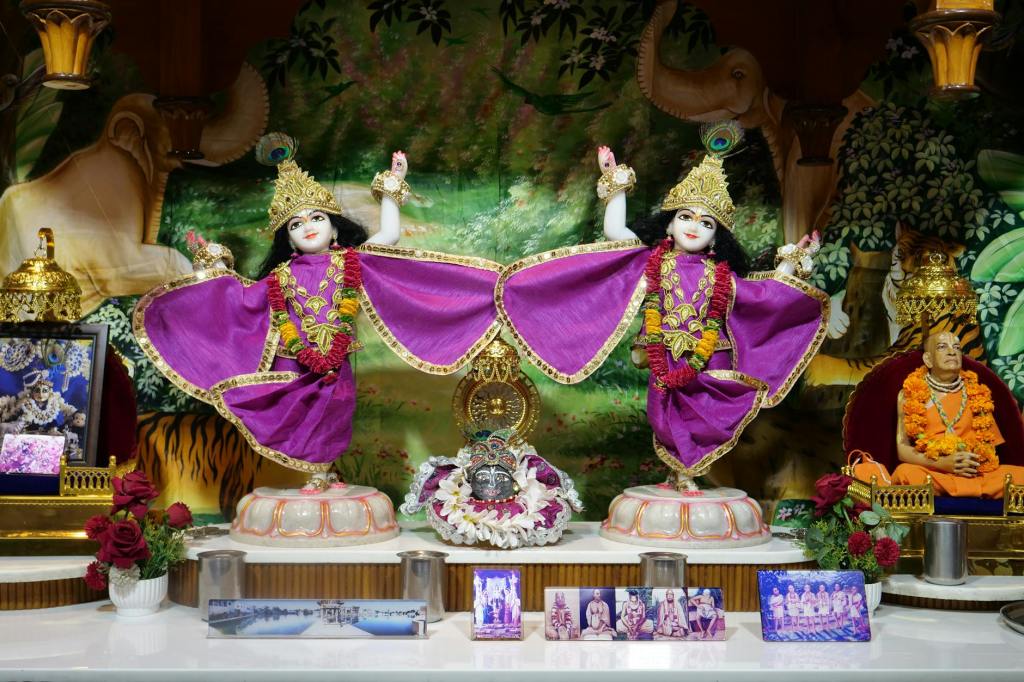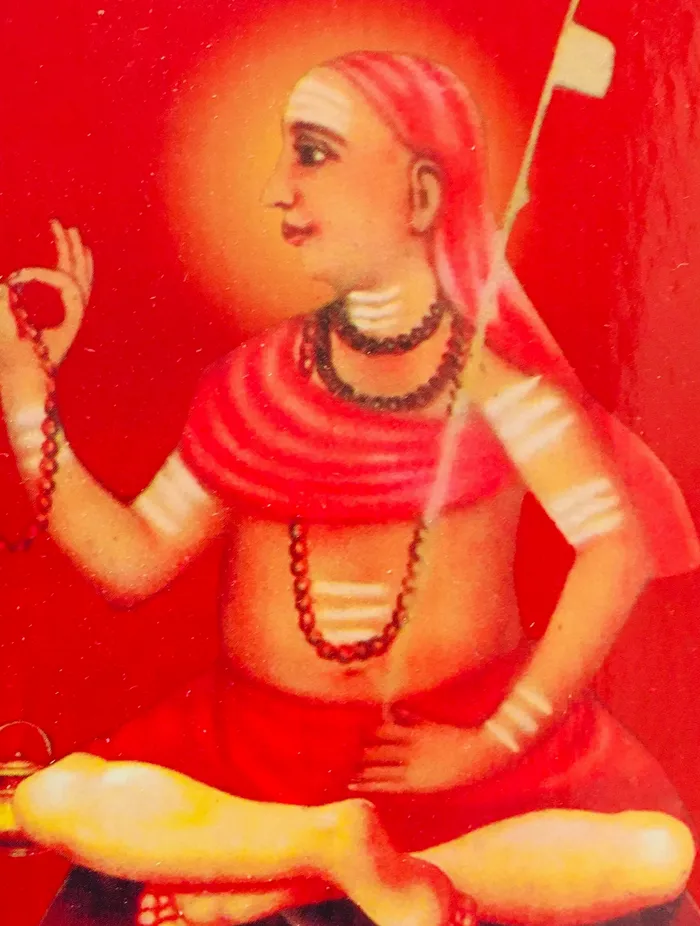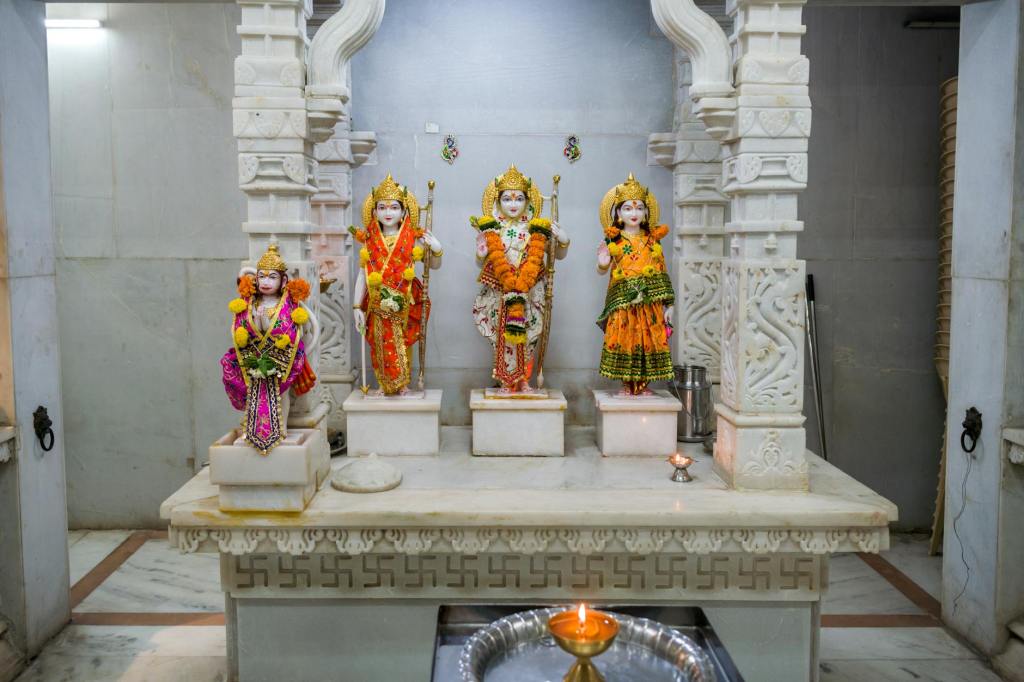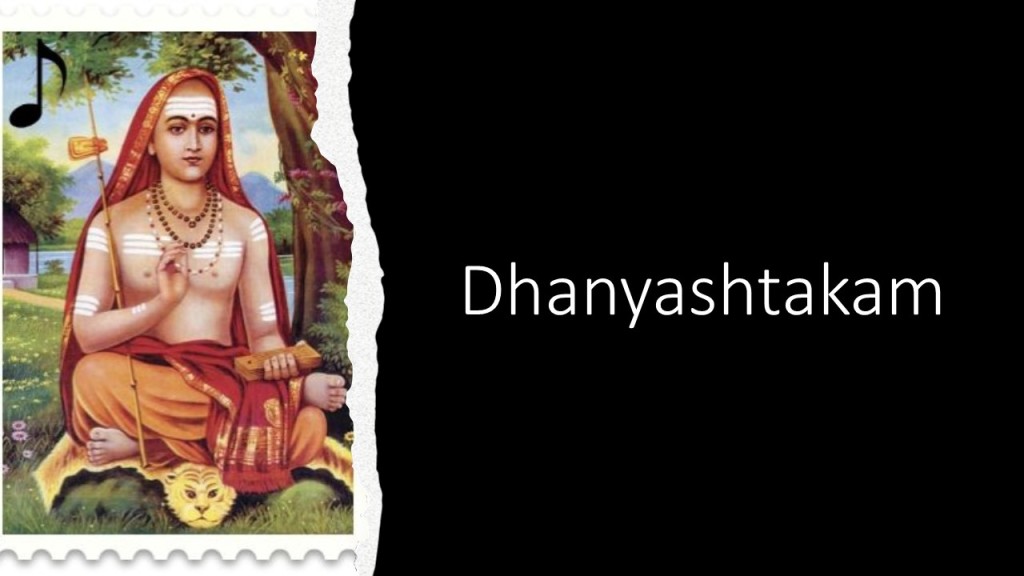Guruvayoor Temple is a Hindu temple dedicated to the Lord Krishna, administered by Guruvayoor Devaswom, Government of Kerala. It’s located in the district of Thrissur in Kerala, India. The history of Guruvayoor temple is at least 5000 years old. This may not necessarily be backed by documents that corroborate this tall claim. However, we intend to start with this statement, as absence of evidence is not evidence of absence. Let’s look at what the legend says.
Long ago, Sri Maha Vishnu handed over an idol to Lord Bramha, which after many generations was came to be worshipped by Vasudeva and Devaki (Sri Krishna’s parents). This idol, known as Adi Keshava was consecrated in Dwaraka and worshipped by lord Krishna himself as well, as their Kula Devatha (ancestral deity).
Towards the end of Krishna’s life, foreseeing the huge floods that would engulf the city of Dwaraka, he handed over this idol to his closest friend, Sri Uddhava. Uddhava was a disciple of Deva Guru Bruhaspati. So, with the help of Lord Bruhaspati and the wind god Vayu, the idol was brought along the western shore of India’s peninsula all the way down to a place called Narayana Saras (in what’s now called as Kerala). There, upon the advice of Lord Shiva, both Guru and Vayu consecrated the idol near the Narayana Saras. In memory of both Guru and Vayu, the place came to be known as Guruvayoor, Gurupavanapuri, Vathalaya, etc. God Shiva and his consort Parvati, who were spending time there in contemplation permitted Guru & Vayu to install and consecrate the idol there and moved to the other bank and settled down at Mammiyur. Another version of the story has lord Parasurama leading Guru & Vayu to a lush green spot behind a beautiful lake, which is a slight variation.

Here are some handpicked stories of some popular devotees of Lord Guruvaroopa.
Melpathur Narayana Bhattathiri
अग्रे पश्यामि तेजो निबिडतरकलायावलीलोभनीयं
[100th verse from Narayaneeyam, that describes the vision of Lord Guruvayoorappa]
पीयूषाप्लावितोऽहं तदनु तदुदरे दिव्यकैशोरवेषम् ।
तारुण्यारम्भरम्यं परमसुखरसास्वादरोमाञ्चिताङ्गै
रावीतं नारदाद्यैविलसदुपनिषत्सुन्दरीमण्डलैश्च ॥ १००१॥
He started composing one dasaka (10 verses) a day in the presence of the Lord. The refrain in last sloka of every dasaka is a prayer to remove his ailments and sufferings. Every day, he sang 10 shlokas on Sri Guruvayoorappan. Each set of 10 poems ends with a prayer for early cure. In 100 days, he finished his compositions, and his condition gradually improved day by day.
On 27 November 1587 when he finished the last dashakam (“Ayuraarogya Sowkhyam”) he was blessed with a vision of the Lord in the form of Venugopalan. The 100th canto composed on that day gives a visual description of this form of the Lord from the head to the foot. And with that, he was completely cured of his ailments (Vatha-roga and of course the bhava-roga).
composition, called Narayaneeyam, is a treatise on the glory of Lord Guruvayoorappan, widely regarded and chanted by devotees across the globe.
Kururamma
Kururamma, a lady who lived in 16th century, was a steadfast devotee of Lord Guruvayoorappa. On a certain rainy day, she lost way while returning home and was worried. It was getting dark in the evening and she was terrified of the wild animals that could possibly attack her. She started praying to Lord Guruvayoorappa to help her reach home safely.
At that time, a young lad who was gracing cows in that area happened to find her and helped her get back home. Happy that she was able to return home safely, she wanted to give him a small return gift. The lad was drenched in rains and asked for some clothes to change. Albeit a poor lady, she happily tore off a bit from her red dress that she was wearing and gifted it to the lad.
The next day, she went to the Guruvayoor temple to have the early morning nirmalya darshan of the lord. The lord’s idol, to everyone’s surprise, was draped in the red dress which she had offered the lad the previous evening. The priests were taken by surprise as they hadn’t draped the idol in red cloth. It was clear to everyone that it was the Lord’s leela. Kururamma was left in tears, as she wasn’t able to recognize the lord the previous day. Even today, Guruvayoor temple offers a piece of red cloth as prasad, in memory of Kururamma.
Poonthanam Namboodiri
A great poet of 16th century, Poonthanam was an ardent devotee of Lord Guruvayoorappa. Not having a progeny was a matter of great sorrow for him and his wife. Lord Guruvayoorappa, also known as arbhaka-saarvabhouman, meaning the emperor amongst children, was his refuge for seeking a progeny for his family. With the lord’s grace, the couple was soon blessed with a baby boy.
When the baby was a year old, Poonthanam wanted to conduct the abda-poorthi function in a grand manner. He invited his relatives for the function. One the day of ceremony, when the guests took bath before sunrise and got ready for the ceremony, they dropped their clothes in the dark where the baby was sleeping silently. As wet clothes kept piling on the baby, the baby was suffocated to death on its very first birthday.
This unfortunate incident was a deep shock to both Poonthanam and his wife. In his immense grief, he went straight to the sanctum of Guruvayoor temple and like Valmiki, expressed his shoka as beautiful shlokas and wrote the famous text, Jnanappana.
It’s said that he had a vision of Lord Krishna as a baby which appeared before him and called him “Father!”. Poonthanam went on to compose many more texts. One of his famous verses could be roughly translated to, “When infant Krishna is dancing in our minds, do I need another baby of my own?”
Guruvayoor Keshavan
Guruvayur Keshavan, the famous elephant, was offered to the Guruvayoor temple bye Valiya Raja of Nilambur. This elephant was unusual in many ways and must have been some yoga-bhrashta jeeva working out its prarabdha to teach humans that the body is never a constraint to do bhakti.
Devotees say that Keshavan bent his front-legs only before those who held the Lord’s idol to enable them to climb upon him for temple procession and all others had to climb by his hind-legs. The elephant never caused any harm to anyone and had the ability to lift his head a much height as possible for hours while carrying lord’s idol. Having many elephants, the Guruvayoor temple has a ritual of conducting an annual elephant race, the winner of which alone will get the rights to carry the idol for that year’s temple processions. Keshavan is said to have won all the races until he got old and lost out to another elephant. When the other elephant was about to carry the idol for procession, Keshavan would break his chains and run into the temple from wherever he was put up. This peculiar behavior made the temple authorities consult astrologers, who advised that Keshavan alone carry the lord as long as he would be alive.
It’s said that the elephant gradually became very intelligent, having consumed the holy prasad of butter over several years. He used to fast on all Ekadasi days.
During the Guruvayur Ekadasi of 1976, Keshavan fell ill and was about to tremble during the deity procession. He was immediately taken to the stable where he fasted for the night and died few days later on 2 December 1976. He fasted for the entire day and dropped down facing the direction of the temple with his trunk raised as a mark of prostration. His death anniversary is still celebrated on the evening of every year’s Ekadasi by the elephants of Guruvayur Devaswom lining up before Keshavan’s life size statue and the chief elephant garlanding it, thus paying tribute. In memory of this great devotee, his tusks are still kept at the entrance of the temple.
Manjula
A steadfast devotee of lord Guruvayoorappa, used to bring garlands for the Lord. One day she was late and the temple was shut before she could offer the graland. She could reach only up to the banyan tree (from where elephant race starts during Utsavam ), and started feeling guilty. Poonthanam, on his way back from the temple saw her crying. He consoled her and advised that she could place the garland on the stone at the foot of the banyan tree, since the Lord is everywhere. Being convinced, she followed Poonthanam’s advice. Next day morning, the priest removed all the garlands from the idol, but one garland remained stuck on the idol. The devotees were puzzled but Poonthanam realised last night’s event. It was the garland, which Manjula had placed on the stone at the foot of the banyan tree. Poonthanam told the story to everyone and then the garland slipped down from the idol. Since then, the banyan tree came to be known as Manjulal and is revered by devotees.
Do take a look at The Cowherd’s detailed travel guide for Guruvayoor Temple.






One response to “Guruvayoor Temple History”
[…] locations in India. The Cowherd has covered the legend associated with this site in a separate blog here. This post aims to help you fine tune your itinerary while planning your visit to this holy […]
LikeLike